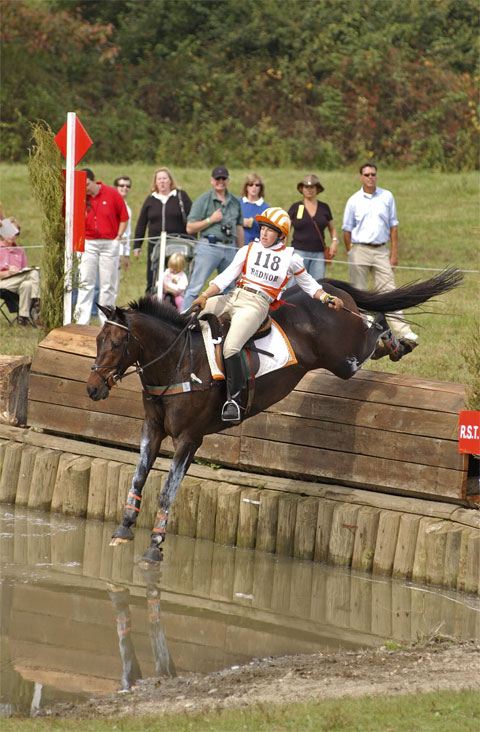
Eventing

The three modern
Olympic equestrian sports are show-jumping, dressage and eventing. The
origins of eventing lie in the battlefield, as it developed out of the endurance
rides that were used to test cavalry horses. At the beginning of the 20th
century, the first three-day event was held, in France. It began with a
dressage test, followed by a grueling cross-country endurance ride, and
concluded with a show-jumping test (added partly to increase public interest in
eventing). At this time three-day events were purely military affairs, and
it was not until after World War II that civilians could compete. Eventing
was first included in the Olympics in 1912, and is the ultimate all-round test
of a horse. Trivia: Charles Pahud de
Mortanges (Netherlands) holds the record for winning four Olympic gold medals
for three-day eventing in 1924, 1928, and 1932. Cross-country jumps are
marked with a red flag on the right side and a white flag on the left side; the
horse has to jump through these two flags or it is considered out of bounds and
you are disqualified.
_________________________________________________________________________________________
"Combined Events" are another popular, and testing, post-war
invention, best described by the French, "Concours complet d' équitation."
In both one-day and three-day events the same horse and rider complete three
phases, dressage, cross-country and show-jumping. The three-day event also
has a grueling steeplechase course, and miles of roads and tracks.
Dressage is a methodical method of schooling for developing
horses physically and mentally. Both horse and rider must "speak the same
language."
The dressage phase in an "Event" is a set test of
varying difficulty, designed to demonstrate both horse's and rider's
skills. The cross-country is of several miles, with a number of different
so-called "natural" fences. The show-jumping phase is not competitive, but
is a test of both horse and rider, and their ability to negotiate this type of
course.